Panchimalco
An indigenous village
Panchimalco is one of the last two remaining "indigenous centers," or "cultural strongholds" in El Salvador today. Census data says that nearly 90% of El Salvador's population is "mestizo," or of mixed European and indigenous ancestry. Nearly all of the indigenous groups that lived in modern-day El Salvador during the pre-colonial era are gone. Only 0.2% of the country today is indigenous. But, Panchimalco is famous in El Salvador for the efforts of its people to honor and retain the traditions of their ancestors.
Pipil
The Pipil are a group of people who are indigenous to the western and central areas of present-day El Salvador and Nicaragua. The majority of people who live in Panchimalco descend from the Pipil people.
Náhuat
The language of the Pipil people is Náhuat. Panchimalco is one of only two villages in El Salvador where people today still speak Náhuat.
Avenida Norte
It is a small village. Most stores and gathering centers seem to be concentrated along three blocks of Avenida Norte, the main street that cuts through the center of town.
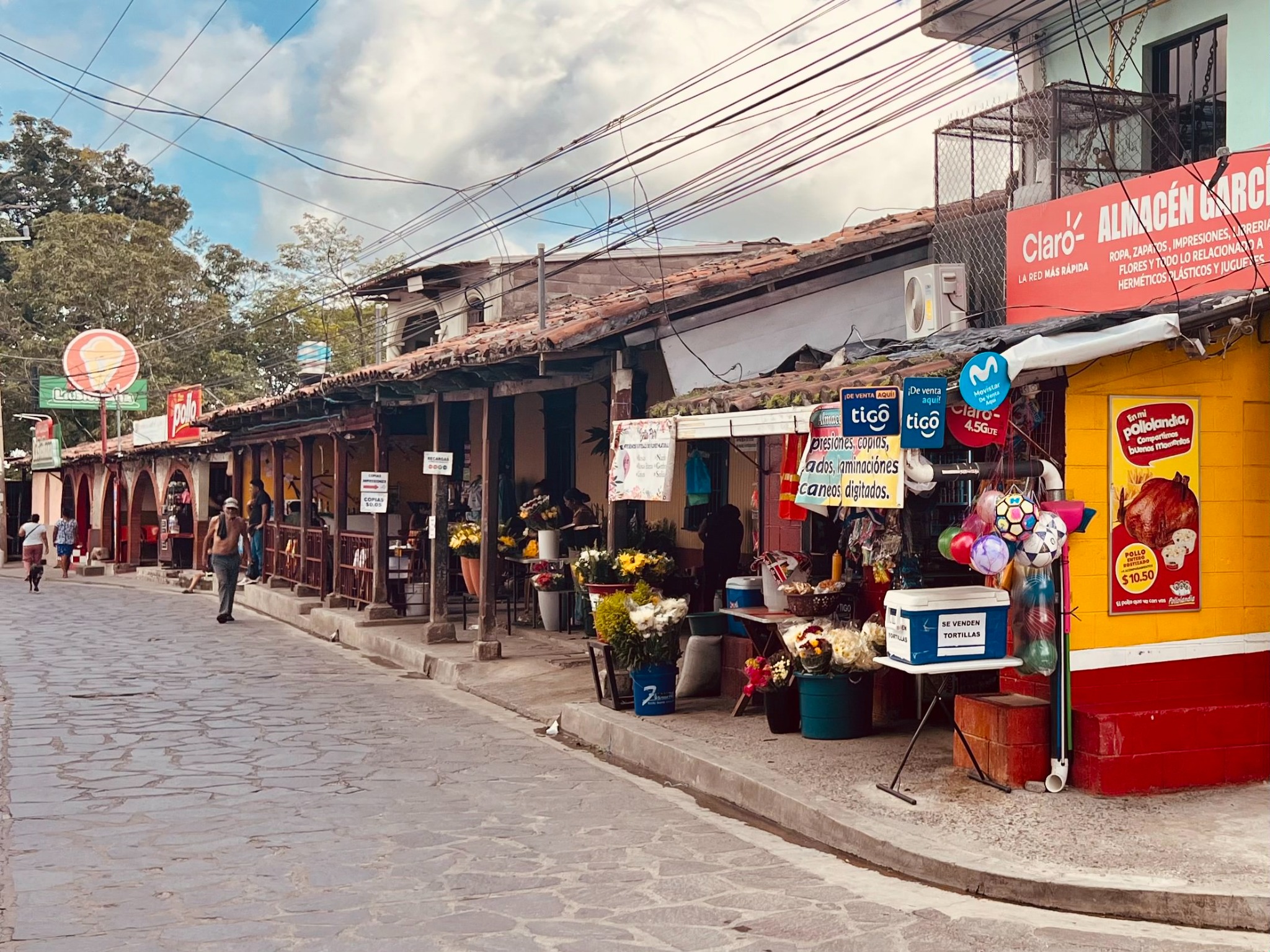
Municipal Building
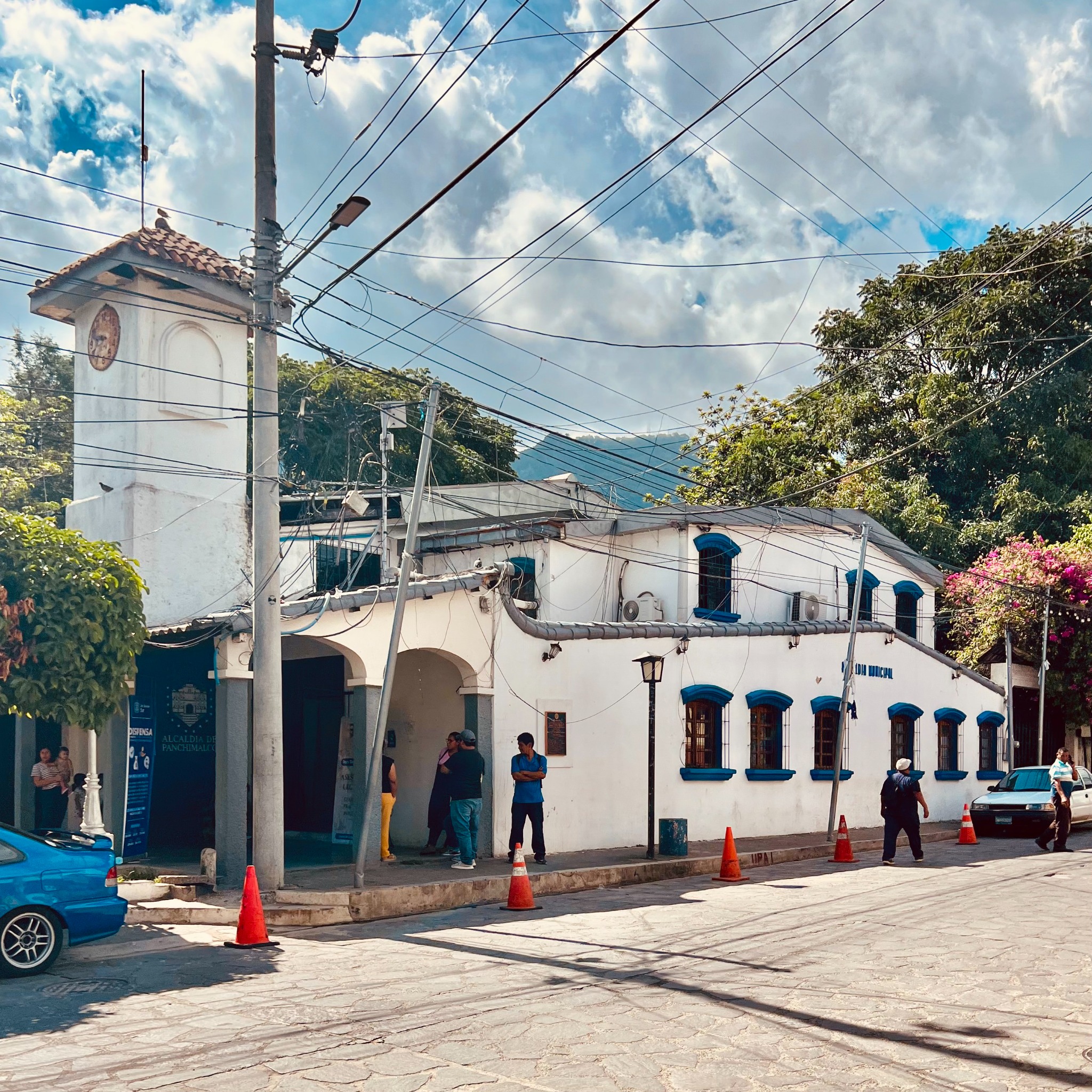
Centro Cultural Sitio de las Cruces
I found a location pin on Google Maps that suggested that this cultural center might be a decent place to visit in order to learn more about Panchimalco. Unfortunately, there was no one there. It was still open, though, so we walked through the entrance and explored a bit. You could see that there was activity--A large mural, decorations, and carvings in rocks, but without anyone knowledgeable present, I couldn't really tell the relevance of much of it. The best I could do was figure out that the faces in the mural in the second photo below were representations of Nahua-Pipil people. Some are wearing traditional headdresses. And then, maybe the inclusion of both young and old people in the mural is meant to symbolize generational continuity and cultural preservation.
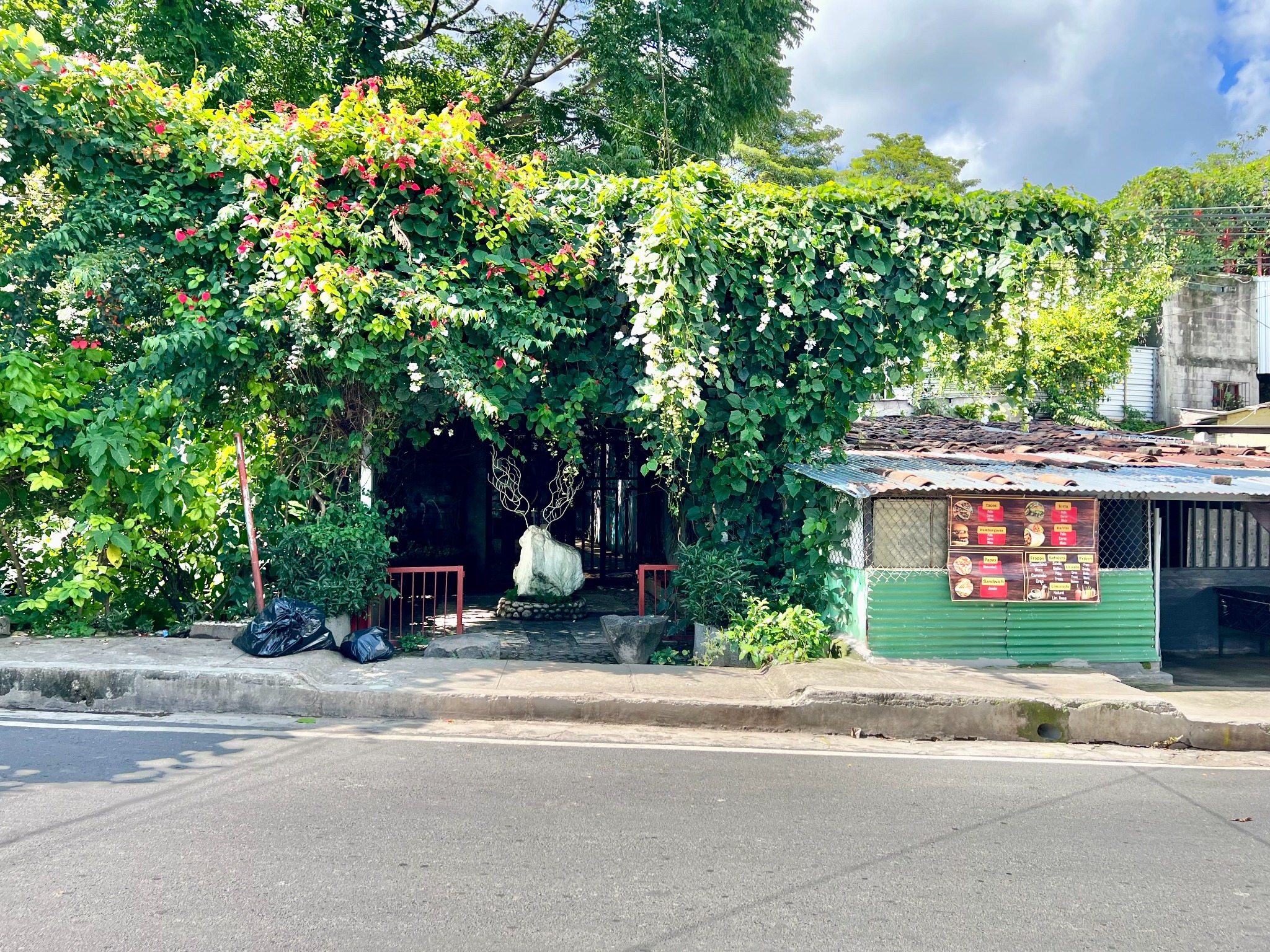
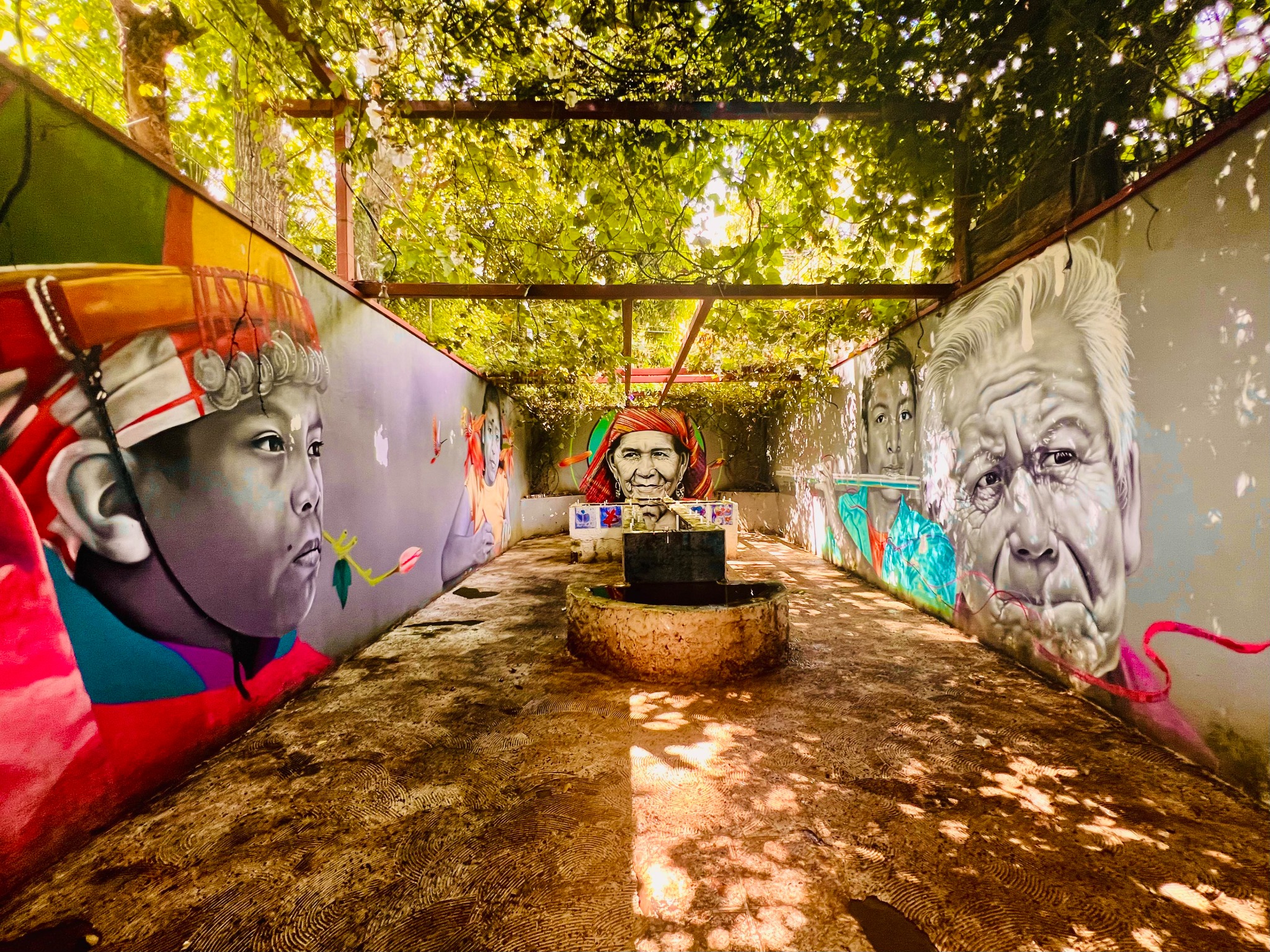
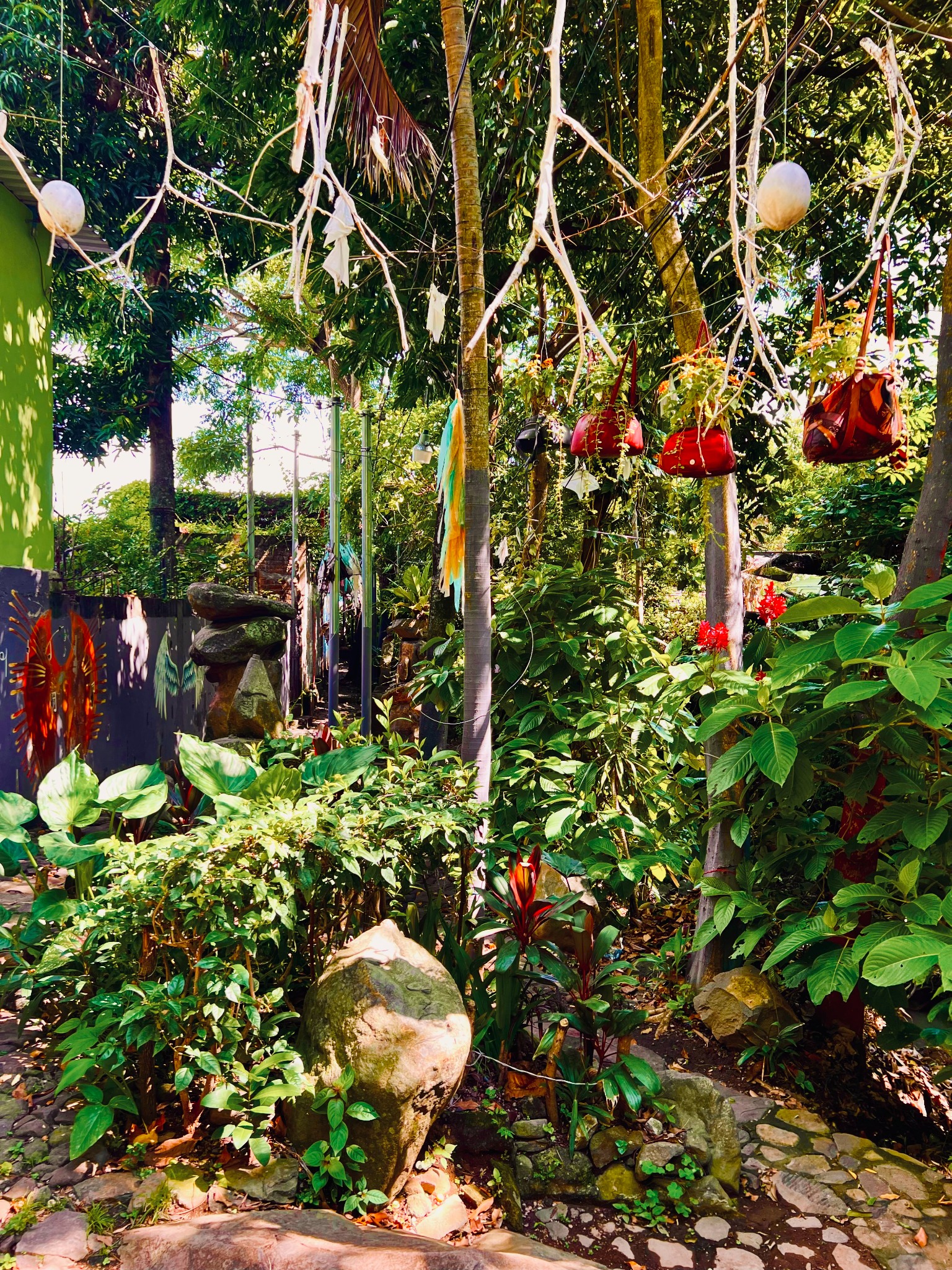
Mercado Municipal & USAID
We decided to stroll through the municipal market and wouldn't you know it, but we came across a plaque declaring that the renovations to modernize the market in its current state were made possible by the United States Agency for International Development. This was timely and ironic because at this time in July 2025, President Trump had just recently dismantled the agency by cancelling nearly 90% of its projects and either laying off or putting on administrative leave over 5,000 of its employees.
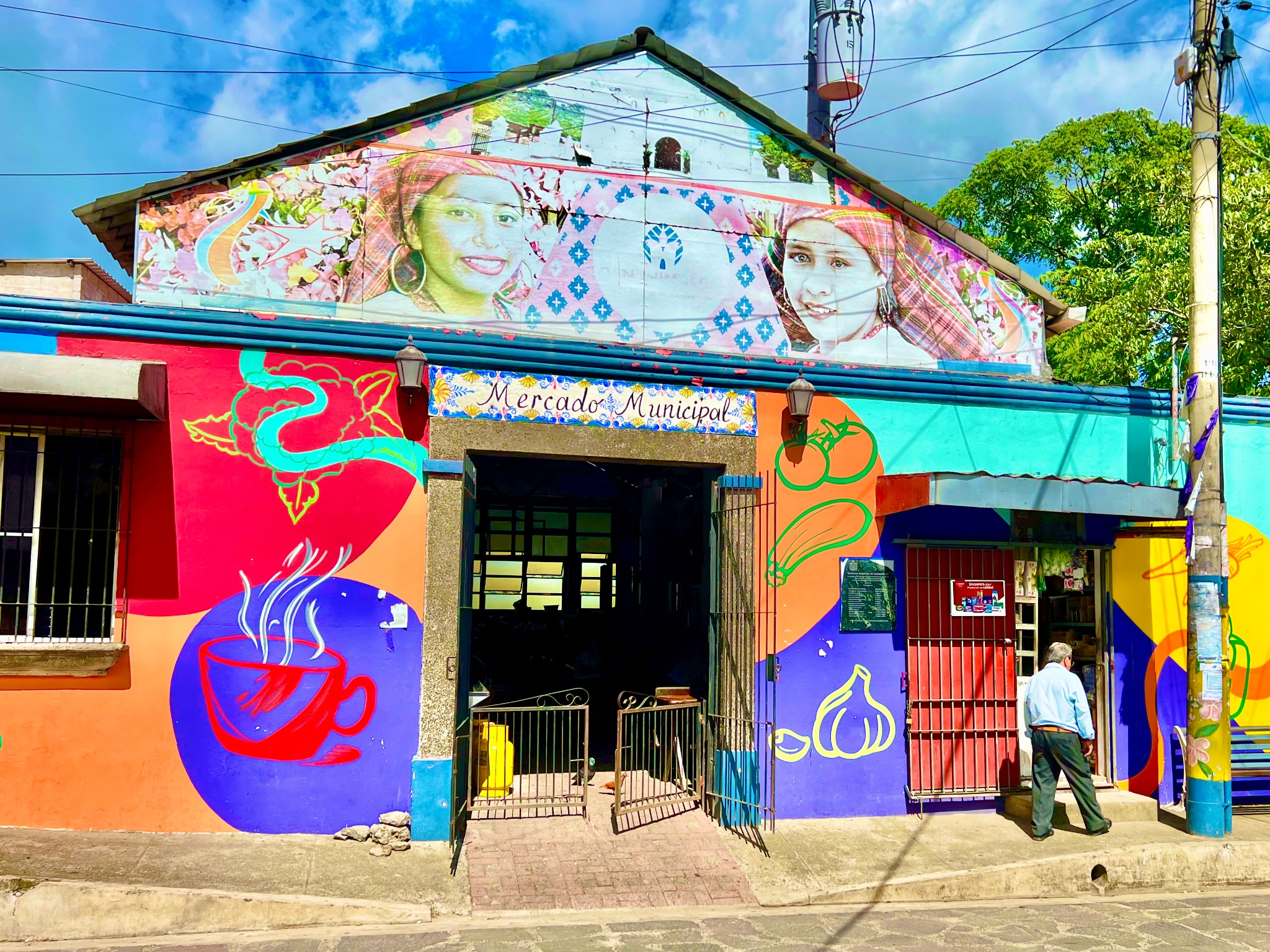
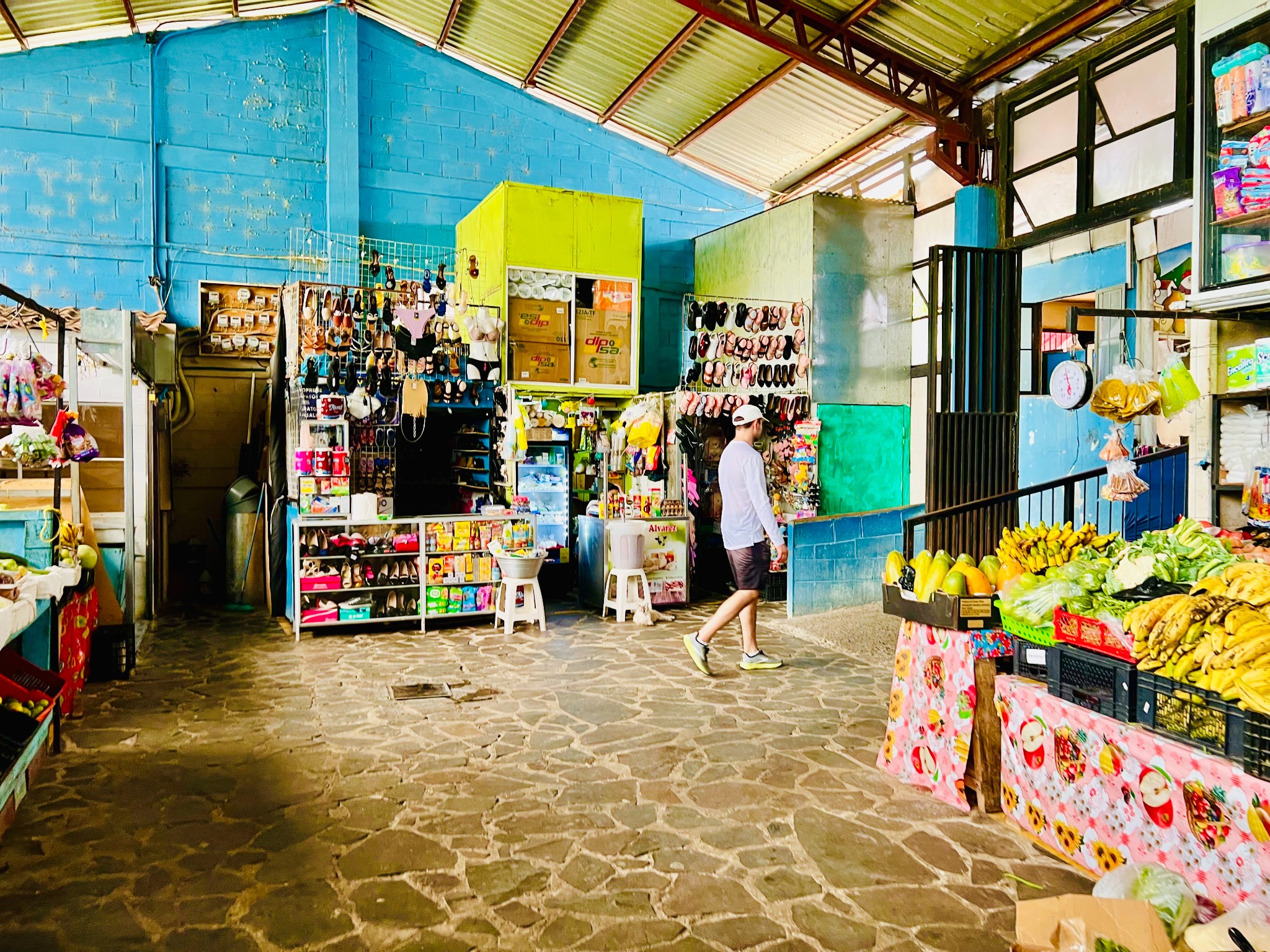
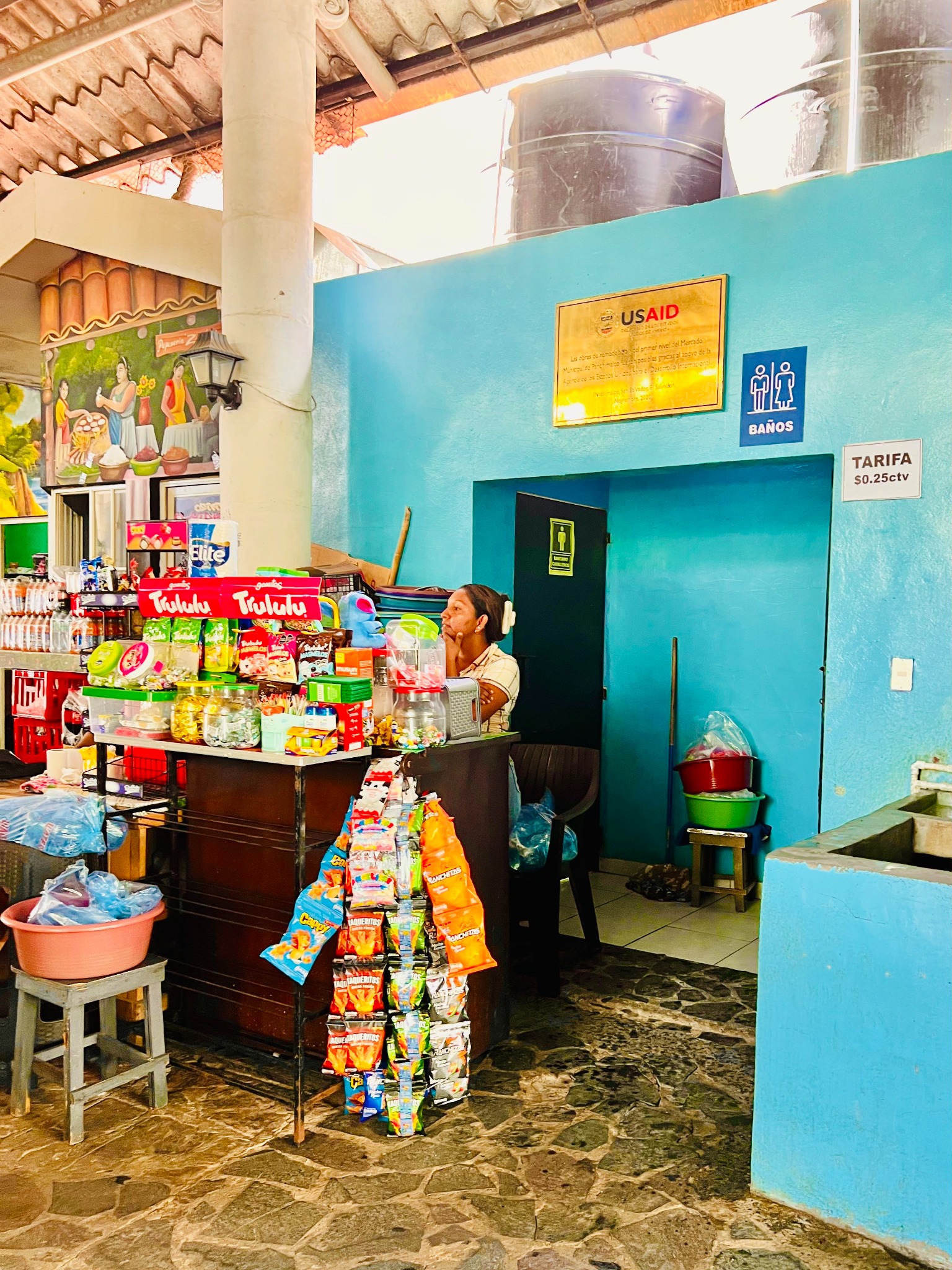
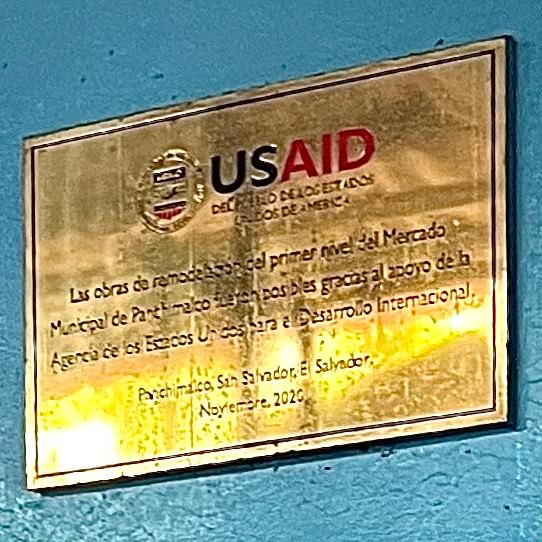
Parque Escultorio
We stumbled into this sculpture park where there were all sorts of murals, souvenir huts, and a restaurant. Here is where I felt like we hit the jackpot because we ran into two guys who taught us about Panchimalco, and without having the experience that I write about next, we would have left the town without learning much about it.
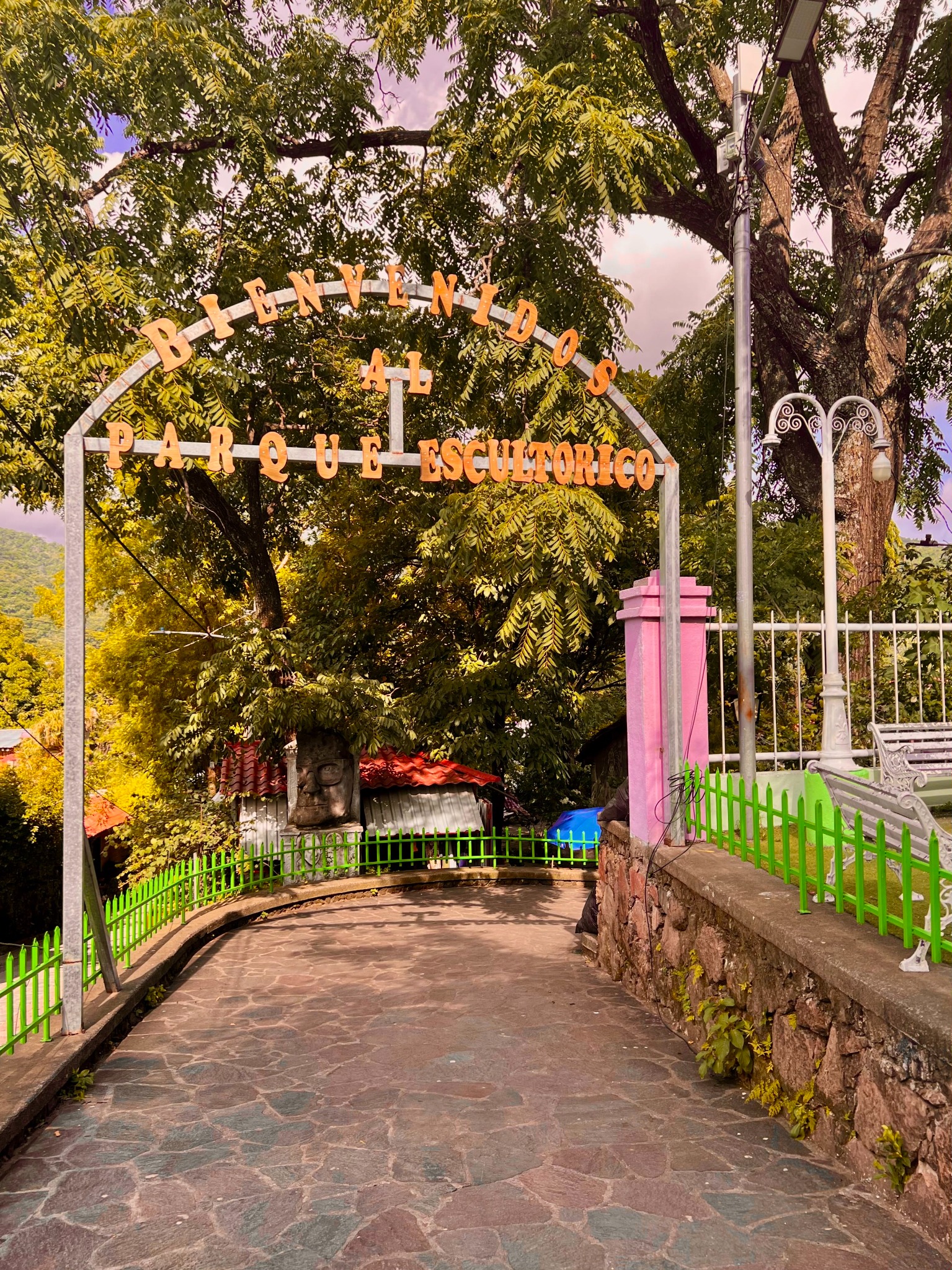
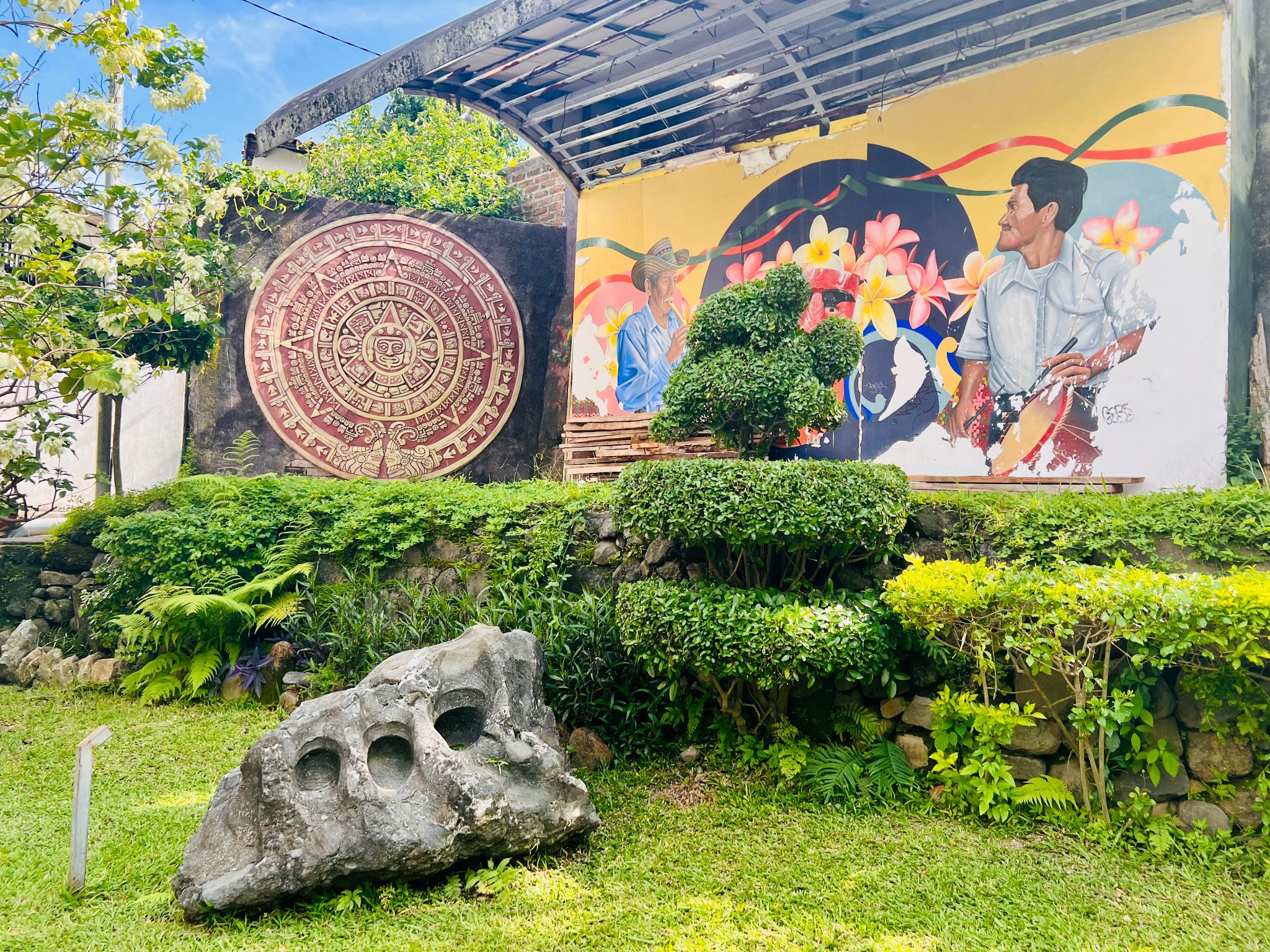
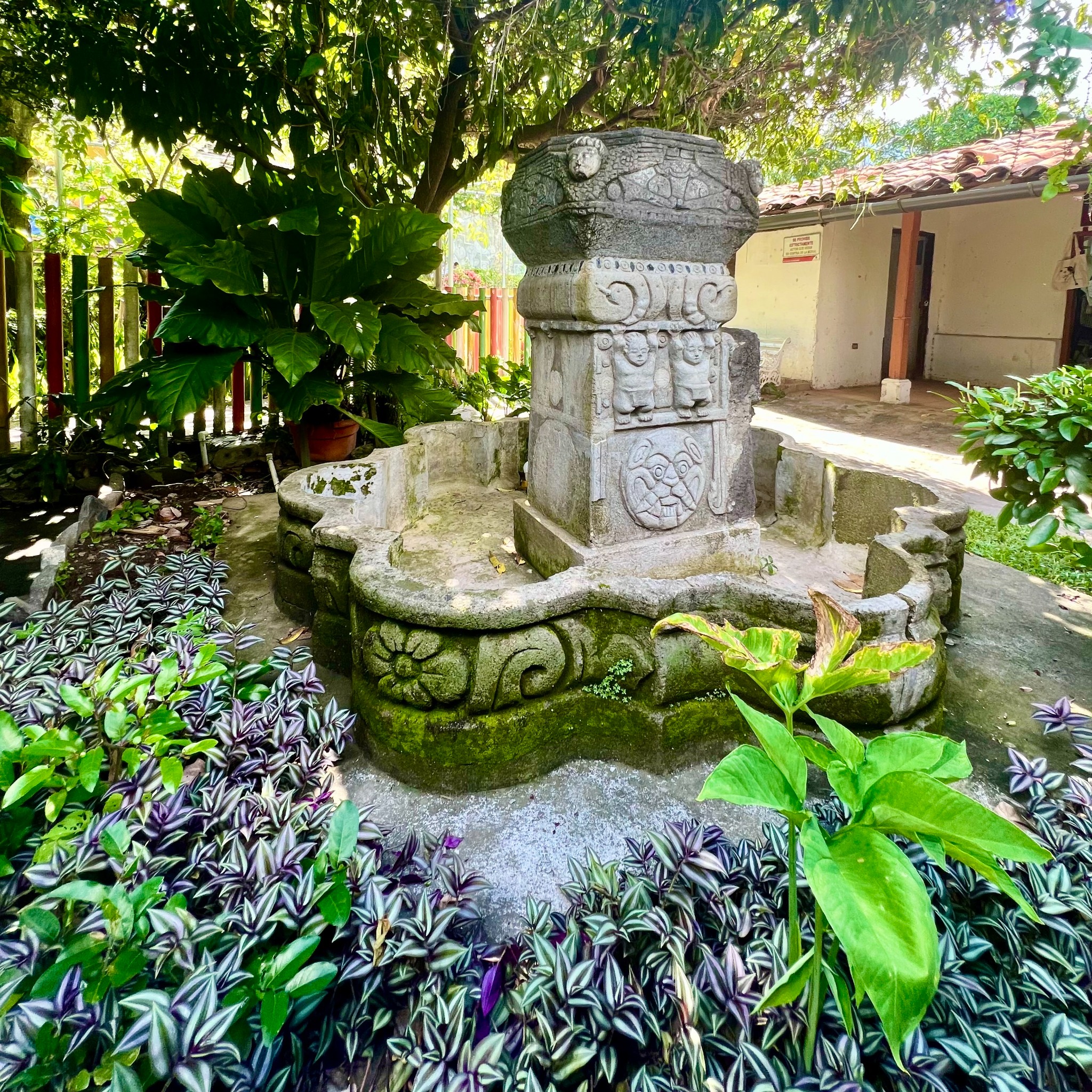
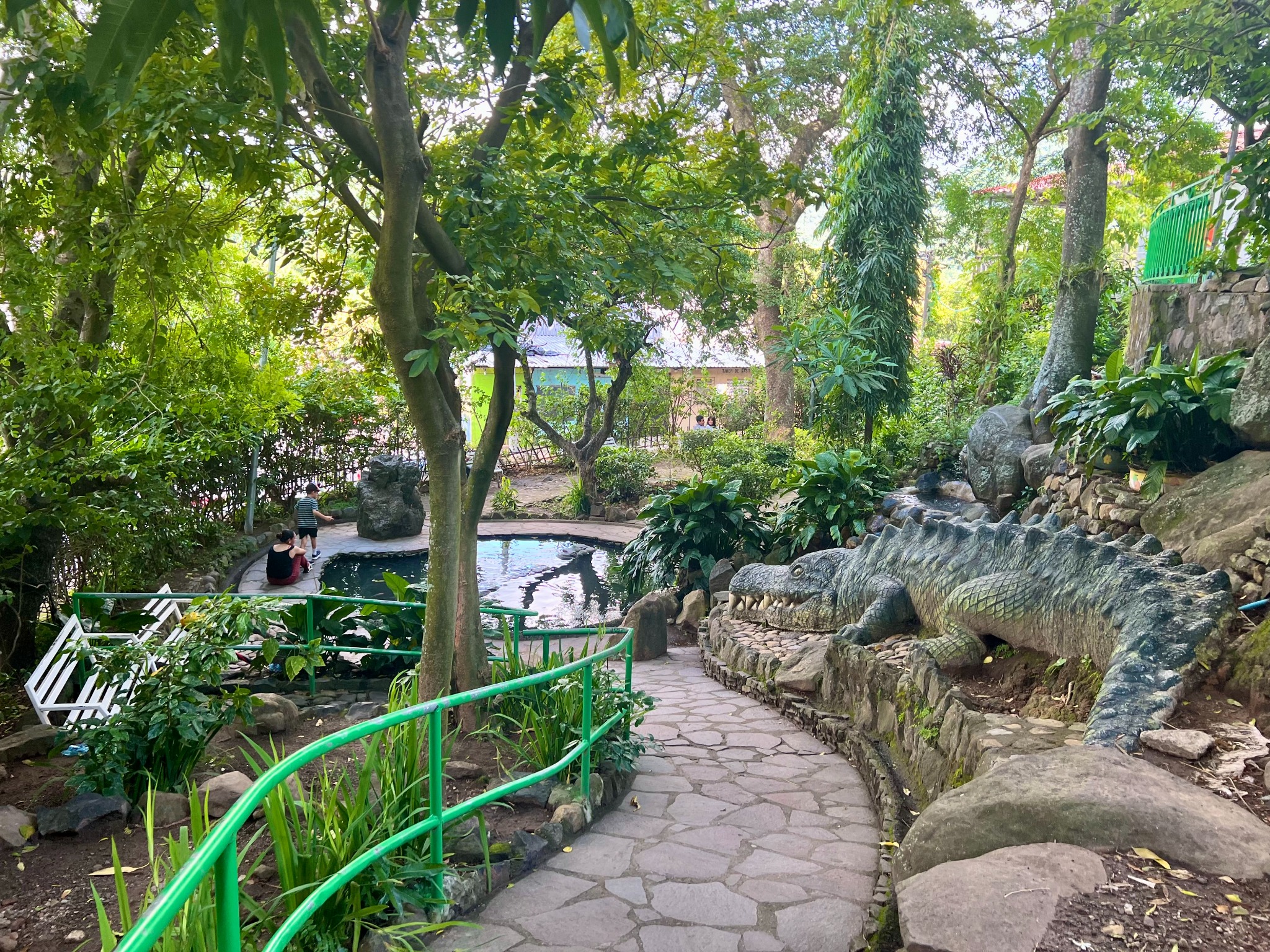
La Casa de El CHAC
The best experience was when these two guys saw us walking in the park and called us over. Yeah, they wanted to see if we would buy a souvenir from them, but more importantly, they were very proud and eager to share with us the history of their village.
They told us that they were "La Casa de El CHAC." Chac is the Mayan rain god. Their "house" was a Nahuatl learning center. The elder of the two men describes himself as "a Salvadoran artisan dedicated to rescuing his culture."
Here is the link to his Facebook page, where he posts updates about all that they do to preserve their culture: https://www.facebook.com/lacas...
The most memorable story that he told us was about how the village of Panchimalco attained its name. In Náhuat, here is what the town name means:
- Panti = flag
- Chimal = Badge/crest
- Ku = Place of
So, "the place of the flag and badge/crest."
During the Spanish conquest of the Americas, in El Salvador, the Pipil-Nahuat people were some of the ones to resist colonization the longest. Before colonization, the village of Panchimalco did not exist. During their fleet, a group of Pipil-Nahuat people decided to hide in the area that is today Panchimalco because at this time it was a jungle and they could hide from the Spanish Army underneath the cover of the trees. The plan wasn't perfect, though, and the pursuing army, although they initially could not capture the fleeing natives, knew enough to identify the general area where they suspected that the natives were hiding. The encircled and marked this area with Spanish flags. From their hiding spot, the natives saw the flags with the Spanish crest on them and thus naturally named their hiding place "the place of the flag and crest." The modern village with buildings and roads that evolved at this site retained the name "Panchimalco."
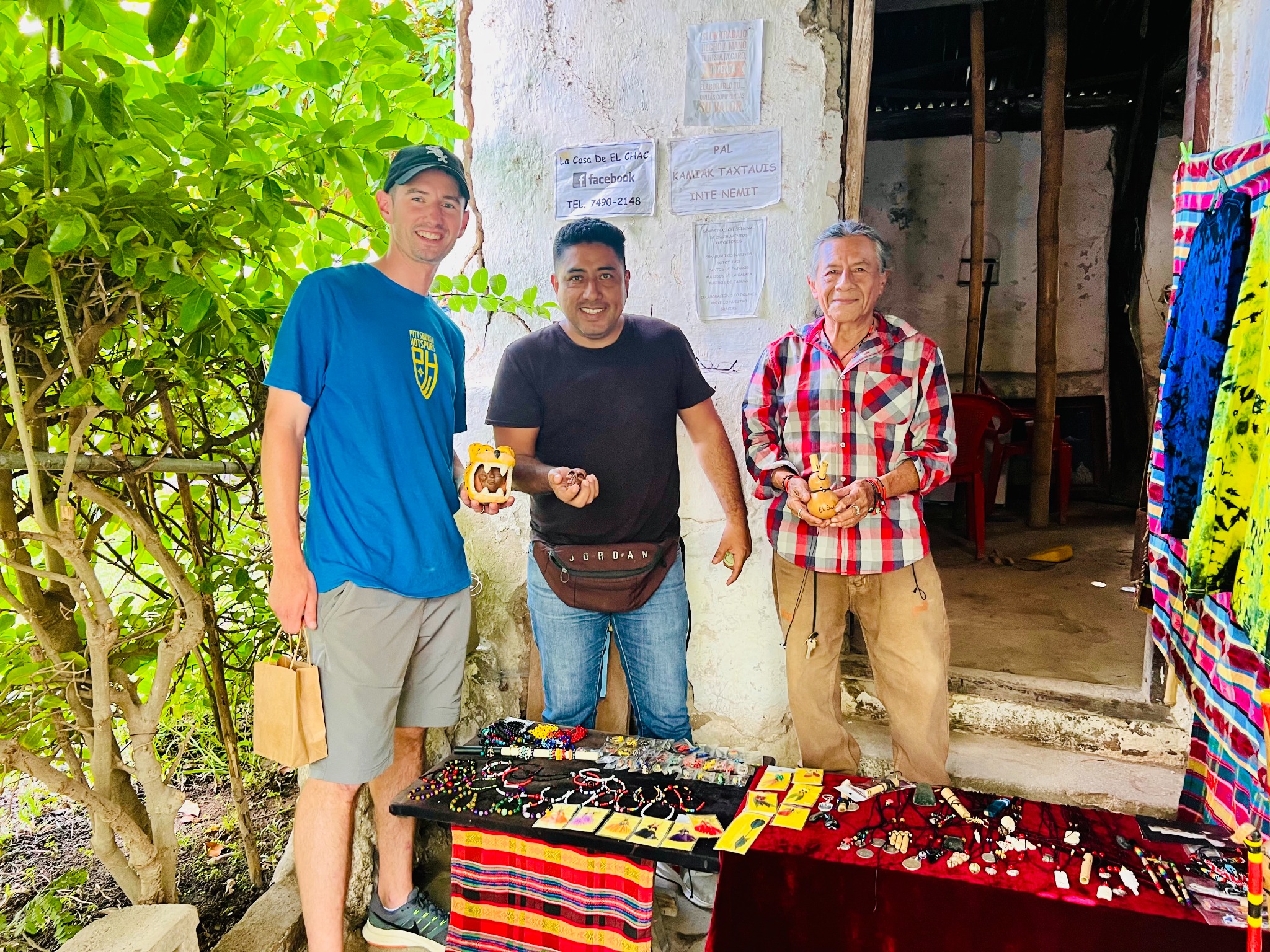
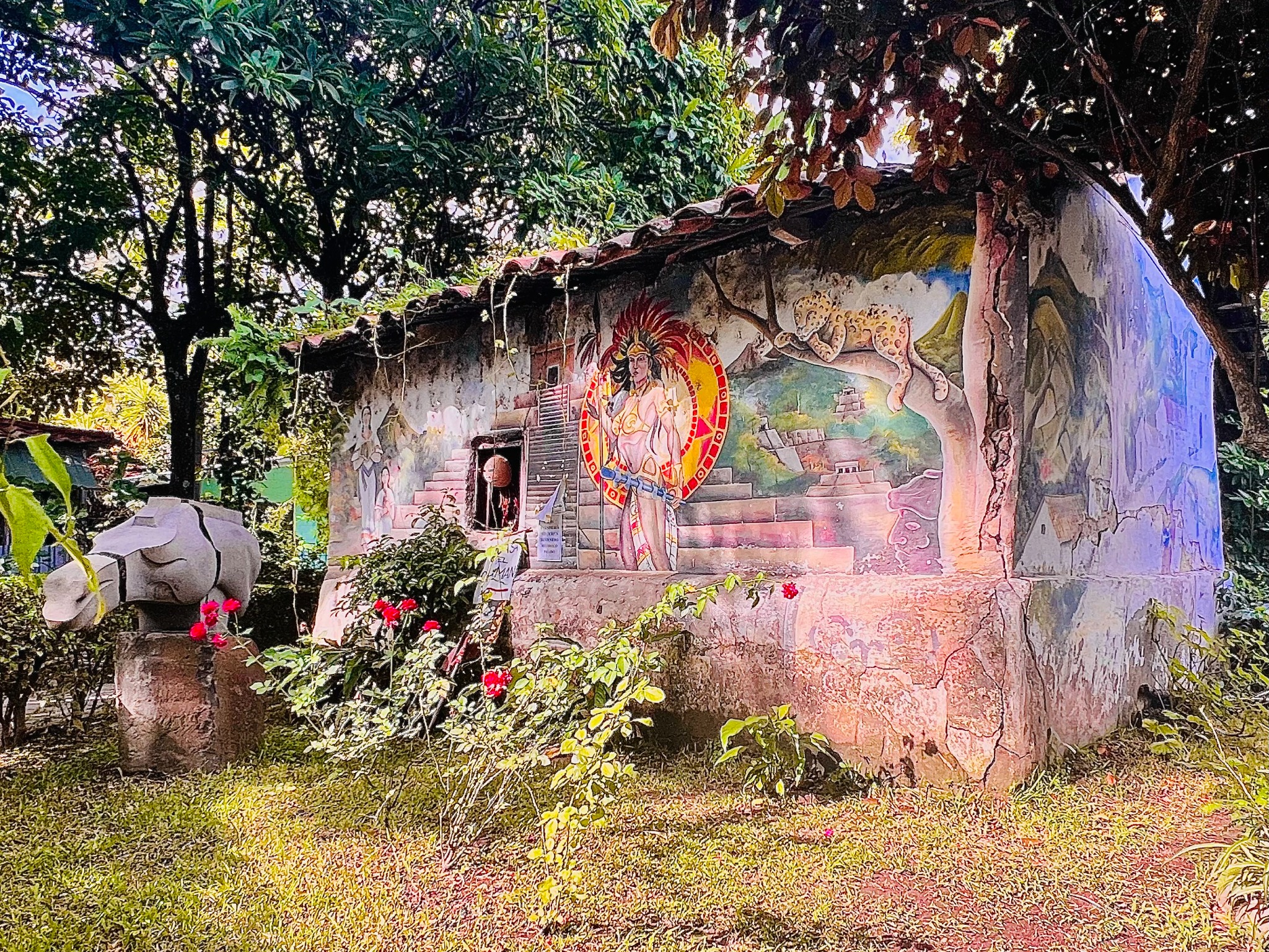
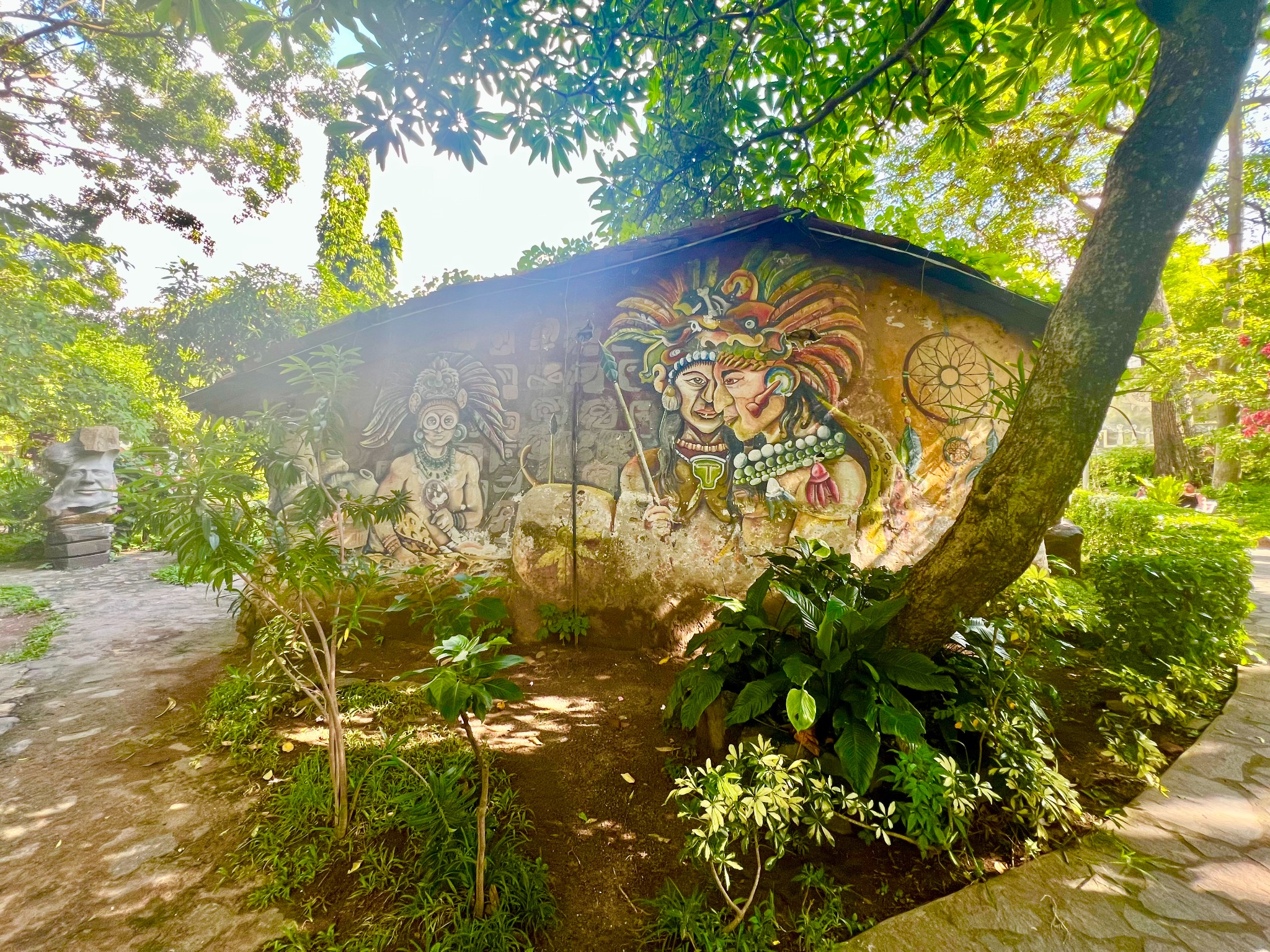
Archbiship Romero
On the way out, I snapped a picture of this mural for Archbishop Oscar Romero. He was the Catholic Church's archbishop of San Salvador from 1977 to 1980. He was known as an advocate for social justice, human rights, and the poor. He spoke out against the violence between El Salvador's military government and left wing insurgents that ultimately led to the country's Civil War. While celebrating Mass in 1980, Romero was assassinated. The message in the mural reads, "Although the assassin bullet kills me, I will resuscitate/rise in the town/people."
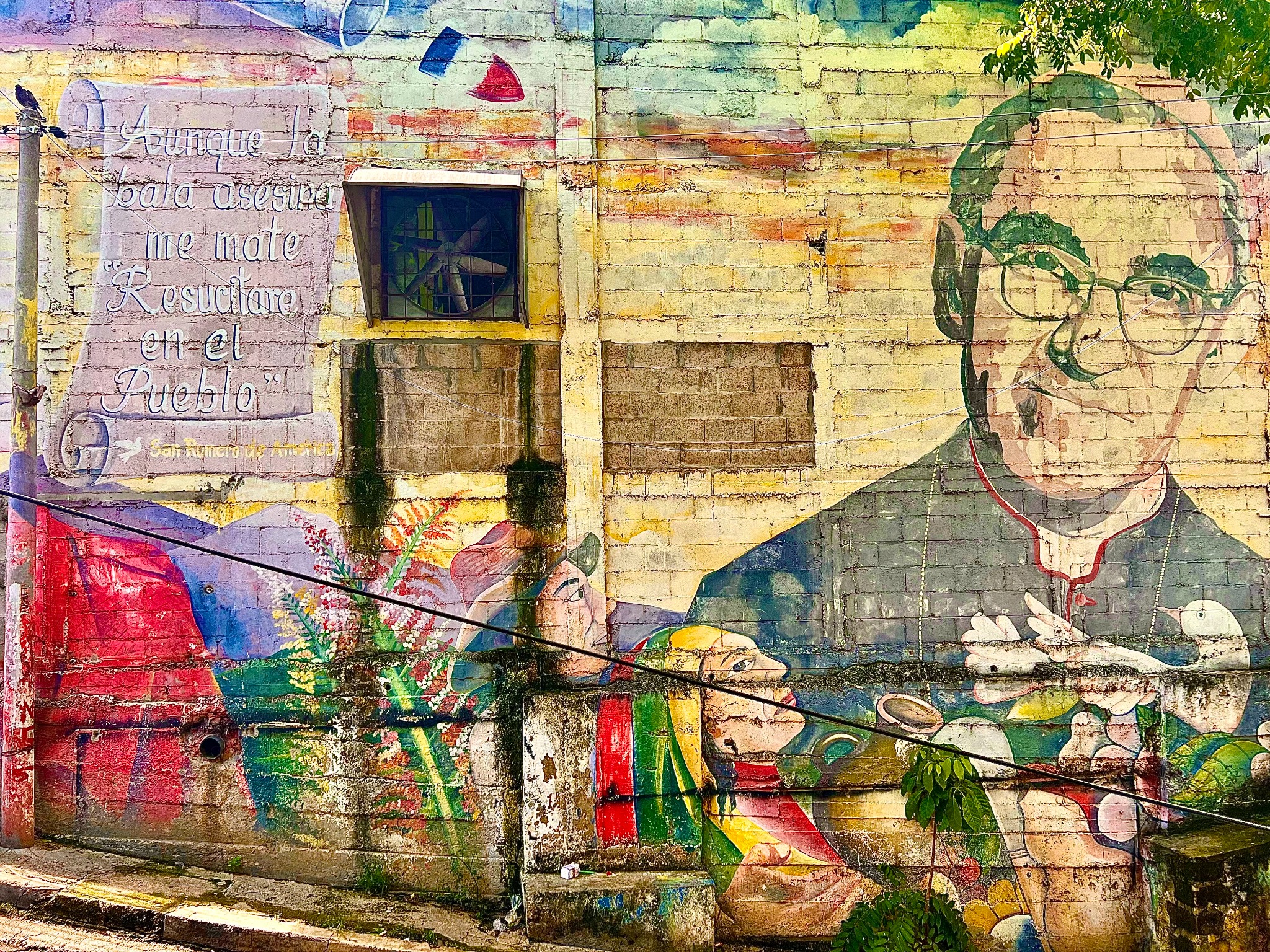
Post a comment